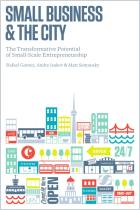
Article
Why Every City Feels the Same Now
Glass-and-steel monoliths replaced local architecture. It’s not too late to go back.
The Atlantic,
2020
Read or listen offline
1×
Recommendation
If you travel for business, you may have noticed that, other than the local language on signs, one modern city often looks like the next…and the next, and the next. While the uniformity of today’s urban centers might feel comforting on some level, Irish writer Darran Anderson suggests that a return to locally-relevant architecture and buiding methods could lead to something more compelling: greater environmental harmony and community-building.
Take-Aways
About the Author
Darran Anderson is an Irish writer who covers culture, urbanism, politics and technology. His books include Imaginary Cities, A Hubristic Flea, 33 1/3 study of Serge Gainsbourg’s Histoire de Melody Nelson, and Tesla’s Ghost.
Learners who read this summary also read
Book
Report
Podcast
Book
















Comment on this summary or 开始讨论